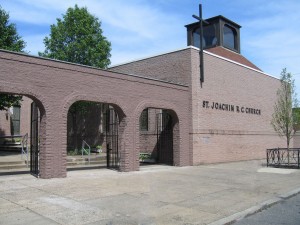When the history of this episode is written, the issue at the top of the list will be the money.
Harold Brubaker, in the Inquirer on July 5th, lists the financial woes that drive Archdiocesan financial planners. Years of financial mismanagement have brought it to the brink of bankruptcy.
There has been a problem with balancing the books every year. If they came up short, in the past they borrowed. That might mean not paying into the retirement fund. That solves the cash flow problem for a year but kicks the can down the road. The result is listed below. The long term liability could be $354 million or more.
$82.0 million – Shortfall from the trust-and- loan fund, which invests or makes loans from money collected from parishes.
$89.9 million – Shortfall from the priests’ pension fund.
$151.7 million – Shortfall from the lay employees’ retirement plan.
$30.4 million – Shortfall from a self-insurance reserve.
The $82 million gap also includes investment losses and reserves for bad loans to some parishes. The plan to pay that money back by selling real estate was formalized last year in a promissory note, essentially an IOU, to the trust-and-loan fund.
Translated into English, this means that the Archdiocese made loans to parishes that are not going to be repaid and some bad investments. They have not fully funded the retirement accounts for lay or priests. This is something that a lot of companies and governments do because its easy in the short run. In the end, that money is owed and has to be made up. Guess who is going to pay the bill. There is nobody else, it is you.
The issue is clear enough for now. They closed Mater Dolorosa and St. Joachm, both of which were financially self sufficient. Why would they do that? I believe the idea was that those assets would be better used by transferring them to another larger parish. Small parishes like ours are expendable.
On the other hand, some may be too big to fail. Does that sound familiar. From Harold Brubaker and the Inquirer on October 1, 2012:
St. Martha parish in the Far Northeast, with 2,200 registered households and nearly 7,000 people on June 30, 2011, owed $637,500 on an archdiocesan loan for a parish center that opened in 2004. Between 2009 and 2011, St. Martha paid no principal on the loan, and the amount of unpaid interest climbed to $202,929 from $160,985.
St. Martha, which was founded in 1966, was also far behind in its assessments, insurance bills, and pension payments. Those debts were $2.1 million on June 30, 2011.
The Rev. Alexander Masluk, pastor at St. Martha, said in an interview this month that parish debt “is not growing at the same rate it was. We’re on a five-year plan that we put in a year ago to stop the bleeding.”
It is rare to get this kind of detailed information at the parish level but it should be made public. It would be good to see for all the parishes involved in closings or mergers. If small self sufficient parishes in the city are being closed to pay the bills of parishes in the suburbs, they should know the truth.


